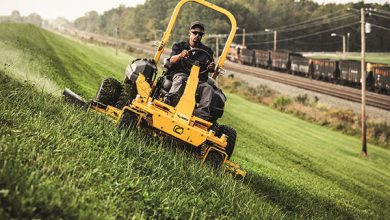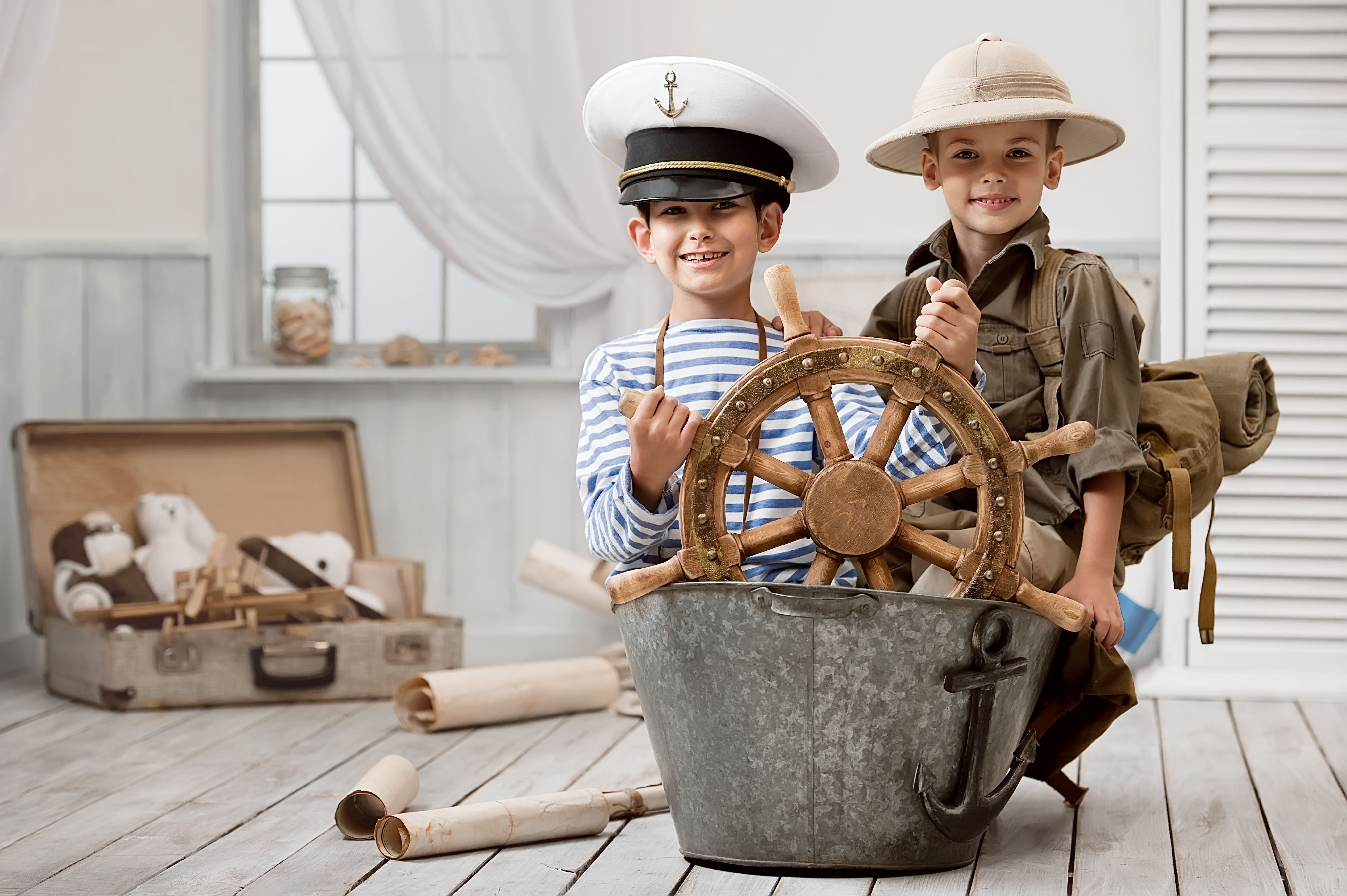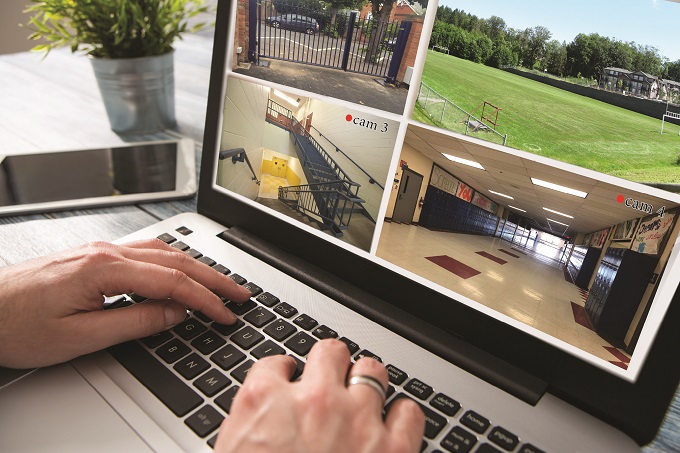Nature’s best teacher is a playscape

According to a systematic review published in 2020, ‘The impacts of unstructured nature play on health in early childhood development’, children have a lot to learn and gain from natural playscapes.
Check out the full article in our latest print issue.
These are outdoor learning environments where children can simply and freely explore the earth; learn by doing and playing. Perhaps unlike a modern playground, nature play prioritises natural materials and elements, focussed on creating a landscape with tools for self-directed play rather than structured games or activities. While research often centres the child-led aspect of nature play though, it can be more teacher-directed.

For example, a teacher may guide a child towards a fallen log or other nature play item. As a learning facilitator, you might prompt a child to join a group immersed in imaginative play with a sandpit or rock stream but ultimately, nature play appeals to educators because it creates organic ways for children to become more independent. It helps them develop and practice all sorts of social and cognitive skills and because nature evolves with the seasons, children grow with it rather than become bored by the same play items. It also helps instil a natural sense of responsibility for land, and awareness of climate issues.
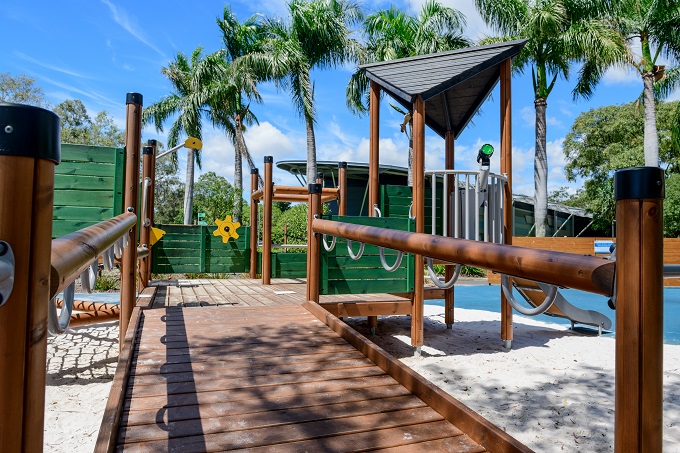
Different studies looking at the outcomes have found children can benefit from participating in nature play in terms of health, academic performance, social development, and even mental heath and cognitive development. While the benefits are clear to researchers and educators, what can be less clear is how to define nature play and what level of design it requires to install.
The best way to find out, we thought, would be to see what nature play specialists and playground designers are doing with schools. So, this issue, School News spoke to some of Australia’s nature play experts, asking about the benefits, special requirements and design options available.

Nature play expert George Davidson from GDL Nature Play Spaces told us why he is so passionate about using nature-based designs in schools: “Generally, there is no special equipment required to create a natural play space. It can start with just a pile of sticks to build cubbies or rocks to sit on.
Hardwood logs and rocks can be used in so many ways; imagination is the only limit. Natural products like sand and pebbles also add interest because these items have many different textures for sensory play. I would not incorporate items from conventional playgrounds, like ropes and nets, but would try to fix them to natural products.
Benefits to installing a natural playscape, he explained, are manifold: “They can be made to fit into any environment or size; materials are natural and sustainable and can teach children about how to repurpose items around them; and most spaces that involve plants evolve over time, changing through the year.
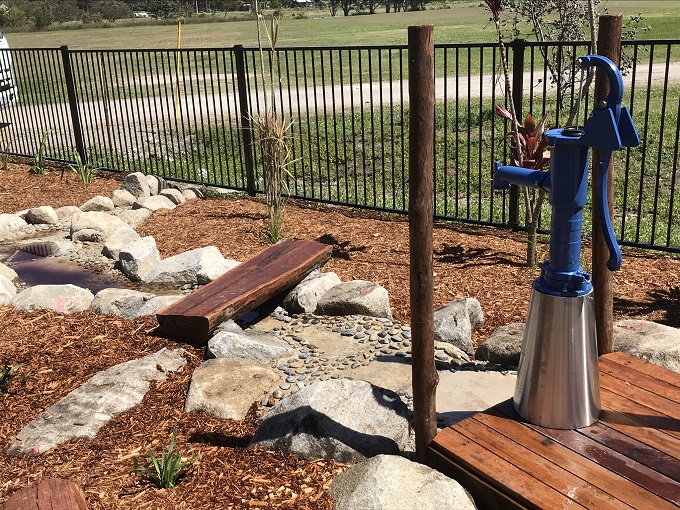
It is a good idea to make the planting an important part of nature play spaces so that it becomes a hidden oasis for students but using natural and generally, locally sourced items also helps keep costs down.
As spaces evolve, items can always be added or removed to keep children interested in the area and teach them more about risk-taking and observing their environment. There is never a right or wrong way to use the space!
Combatting some misconceptions around nature play, Timber Creations’ Madelyn Smith said: “Often people think they need to have a large, clear, flat space to work with, but often the best projects are those with interesting features to work around. Slopes are fantastic for play and can be used to make a really creative non-prescriptive play space.

“Other awkward spaces can be turned into great play areas, such as at Windale Public School, where they had a retaining wall about 1.5m from the fence, that took up a large portion of the space that was unusable. With that installation, we turned it into a climbing and clambering wall and used the space on top to create a cubby area by adding wide timber palings.
Madelyn told us: “My favourite structure of the year is a big whale climber at Windale Primary School, that is made from some incredibly rare timbers that were collected, White Cypress is normally straight but due to an accident while the trees were growing, they grew in a curve, and have been utilised to create an amazing domed climber that is absolutely one of a kind.
This climber uses several other interesting pieces from the timber creations collection, including hollow log eyes, a curved log tail, and custom milled flipper boards. It is also appreciated as an aboriginal totem and significant for the local Awabakal people.
Sustainability is a key feature for new nature play spaces, according to Wearthy playground designer Lukas Ritson. He explained: “We have to be the bridge to nature so we can enable children to explore.”

Working with early childhood centres and schools on sustainable projects has been eye-opening: “One of the oversights I’ve witnessed time and time again is trying to teach children about sustainability in an abstract way when children need to make a connection with the environment by caring for it and seeing how it cares for them.
It is important to consider that environmental sustainability starts with a social practice – one of engagement, fulfilment and true wonderment of a childhood experience.
I encourage educators/teachers to get children involved from a young age in cultivating vegetable gardens or raising chickens. They can also install sting-less bee boxes and landscape playgrounds with butterfly attracting plants that will deepen the nature connection for children.
In a recent playground project in Floraville, Newcastle, Lukas told us he started off with an amazing foundation in the form of a huge space with giant established trees. “It’s integral when designing a space that we work in alignment with the existing environment. Each project is about complementing what is already there, not trying to recreate or prescribe the types of play for the children.

“This playground now features big raw logs and boulders, a traditional sandpit, a treehouse, hidden monkey bars, mud kitchens, wilderness areas, a riverbed with loose rocks to build dams and play with flowing water, a sustainability learning zone, raised garden beds, compost unit and a cubby building and rope tying section.”
Glenn Williams is managing director at Austek Play and spoke to us about what is involved in designing a natural play space installation in collaboration with schools. Glenn said: “Designing successful nature play areas needs to be a collaborative approach.
As the space is a built playspace, it is important to ensure the proposed design does not present unacceptable injury risk by engaging a qualified playground company.”
Special materials help create special environments, unique to each design: “Where possible, recycled Australian hardwood timber such as Ironbark, is a tremendous option for materials selection due to its natural resistance to rot and termite attack. Natural stone is also a great maintenance-free material. The key is finding products that suit the local geographic region.”
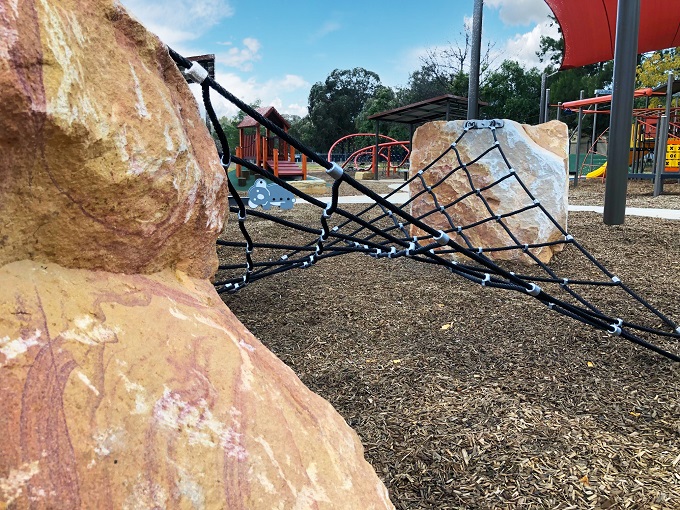
Kenmore West Kindergarten directors and teachers, Natasha Moore and Robert Pratt, were excited to talk to School News about their recent collaboration with Austek Play: “The collaborative approach helped ensure the outcome suited our environment and provided a wonderful, challenging play space for the children.
Because the design includes a balance of elements that are accessible yet physically challenging; spaces to hide and spaces that provoke the imagination, the children are always drawn to the area engaged in meaningful play.
For some, just being able to reach the monkey bars is an achievement, for others, eventually being able to cross is so exciting!
They advised that schools aim to: “Ensure the design complements the landscape, contours, vegetation, etc. Ensure there is a balance of physical elements that are challenging, accessible, and imaginative. Use natural materials as much as possible. Listen to the children during the design process – they know better than anyone what they want.”



